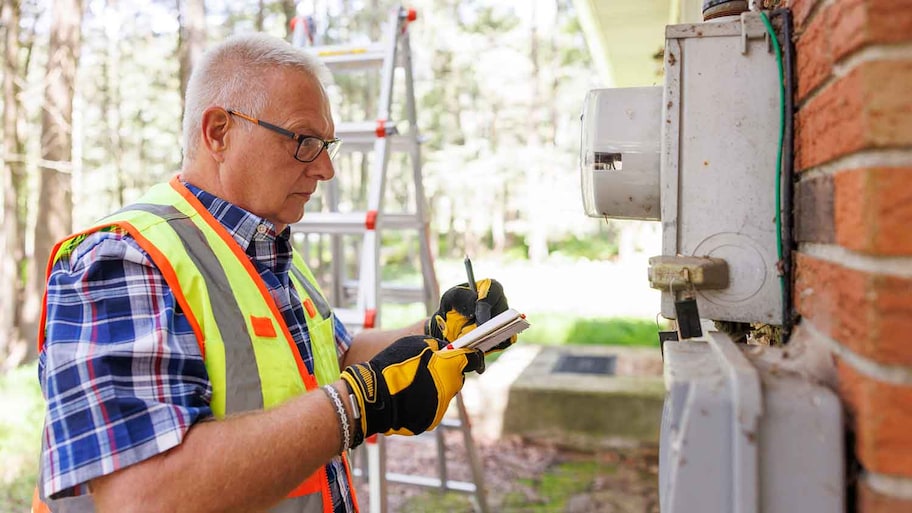How to Take Over Utilities When Moving Houses: 10 Steps to Follow
Don’t wait until moving day to transfer your utilities


Moving takes a lot of planning for homeowners, whether it’s a long-distance move or to the other side of town. One of the more easily forgotten tasks on the moving checklist is determining how to take over or transfer utilities when moving to a new home. Follow these steps to take over utilities when moving to a new house.
1. Start Early
Getting a jump start on moving your utilities makes the process a lot simpler. Some utility companies need advance notice before you end your services, especially if there are in-person appointments to schedule. Aim to start the process at least two to three weeks before your move.
2. Make a List of All Utilities

Write down a comprehensive list of the utility services you have to get an idea of what will need to be canceled or transferred. To make the process easier, write down the numbers you’ll need to call, your account number, your anticipated last date of service, and any other important information about your account.
Here are the common utility services to think about when moving:
Electricity
Gas
Internet/TV
Water
Waste Removal
3. Research New Providers
If you’re staying in the same city, you can likely transfer your services to your new address. However, you may need to contact new providers if you’re moving out of town or out of state.
Research the companies in your new area to see if you can simply transfer your services or if you’ll need to contact a new company. You can also ask your real estate agent or friends in the area if they have any companies they recommend or other moving tips.
4. Check if Your HOA Covers Utilities
If your new or current home has a homeowner’s association (HOA), check the details of your home agreement to determine next steps for transferring utility services. Many HOAs cover some basic utilities, like trash removal or water, which means you will pay for those services as part of your monthly HOA payments instead of individual bills.
If your HOA covers a utility service, double-check if you need to call the company to start service or if it will seamlessly transfer once you move in.
5. Contact Utility Companies

Once you know which utilities you’ll need to cancel or transfer, contact your current utility companies and let them know your last day of service and if you need to set up services in a new house. Plan to have the services disconnected the day after you move or on closing day so everything is fully functioning while you’re using the home.
If you need to set up services with new providers near your new home, call those companies, too. Provide them with your new address, payment information, and move-in date ready to get services started.
6. Call the City for Waste Removal and Water
Most city municipalities handle water and waste removal services but check your new location to finalize. To set these services up, call the appropriate city departments and provide your address, phone number, and start date. You may also need to show proof of residence, so have a copy of your mortgage or purchase agreement handy. Ask for the services to start on move-in day so everything is ready to go when you arrive at the new location.
7. Pay Balances and Return Equipment
Some internet providers require homeowners to return equipment when you cancel services, so check with your company to see if you need to send back a router, modem, or other equipment. You can usually mail back the equipment, but some companies also offer locations to drop off the items in person.
Most importantly, ensure all balances with your current utilities are paid in full before your end date. This step helps avoid late fees and creates a fresh start to move utility services over to your new home.
8. Conduct a Final Meter Reading

Before leaving your current home, ask your utility providers to visit your home and conduct a final reading of the gas, electric, and water meters. This step provides a measurement of how much energy usage you are responsible for in the current home. Keep a copy of the meter reading reports to confirm your service end date and to reference in case you receive any unexpected bills after moving.
9. Confirm New Services
Before your local moving company transports your belongings into your new home, call your providers to double-check that services are confirmed at the new location and start on move-in day. You wouldn’t want to move to your new house only to have the lights and heating not work! It’s also a good idea to confirm payment information so there aren’t any hiccups with billing.
10. Conduct an Energy Audit at the New Home
This step is optional, but it could save you money in energy costs in the long run. Call a technician to visit your new home and conduct an energy audit to identify any air leaks that are reducing your home’s energy efficiency.
The audit results will tell you if insulation, ductwork, or the HVAC system in your new house needs improvement. There might also be small issues, like drafty windows, that you can easily fix on your own, but other problems may require hiring a professional for assistance.
